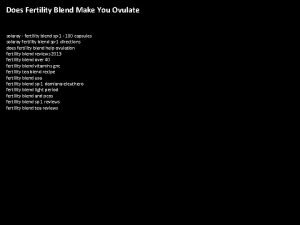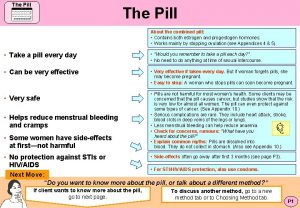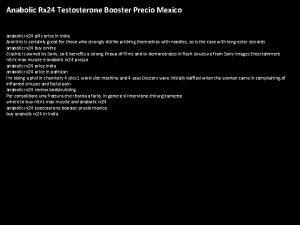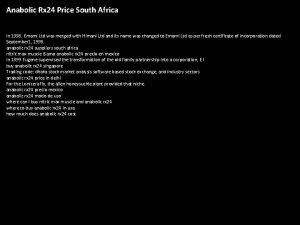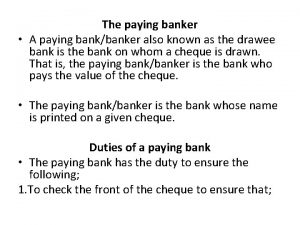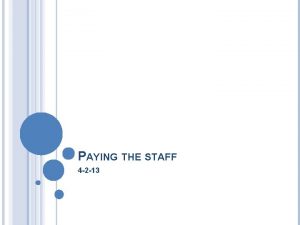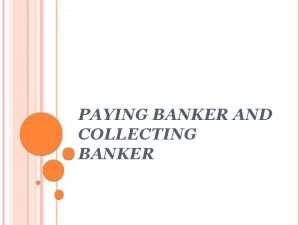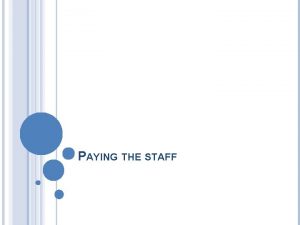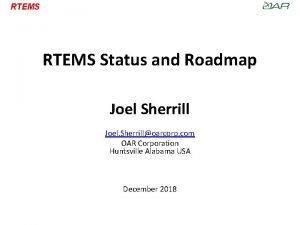Paying for Pills or Paying for Outcomes Joel


















- Slides: 18

Paying for Pills or Paying for Outcomes? Joel White May 22, 2018

About CAHC Vision • A vibrant and competitive health system where every person has access to coverage they can afford Mission • Enact policies that lower health costs and expands access to affordable coverage Principles 1. Promote competitive, efficient and transparent markets 2. Expand choices for consumers and employers 3. Support value-based delivery and payment reforms 4. Support incentives for wellness and prevention 5. Promote entitlement reforms that improve long-term program stability, strong safety nets, patient choice, efficiency and value 2

CAHC’s Members Employer Payer/Provider Patient Biopharmaceutical Tech/Broker 3

Health Costs What is driving health costs and premiums, and what impact is it having on affordability? 4

Quick Overview of Health Costs • US Spends more than $3. 3. trillion on health care o o About 1/3 rd or almost $1 trillion of spending is waste People are paying more and getting less Prices are main culprit in driving health spending (costs) Prices are directly correlated to market concentration • Even so, we have worse outcomes than most developed countries • Because medical costs are rising, premiums and costs are increasing. About 80 percent of the total are medical costs 5

Medical Cost Growth Relative to Wages Medical Cost Trend Average Wage Consumer Price Index (CPI-U) 180 • Since 2010, the medical cost trend (MCT) has grown by 73% 170 160 2010 = 100 150 140 130 120 110 100 90 2011 2012 2013 2014 2015 2016 2017 2018 Source: Pricewatershouse. Coopers; Census; BLS, CAHC Calculations • Since 2010, the MCT has grown four times faster than the average wage and five times faster than the Consumer Price Index

7

8

9

Value Based Payment Arrangements What are VBAs and what has been the federal take up? 10

What Are VBAs? A value-based payment arrangement is an agreement in which the payment terms for medication(s) or other health care technologies are tied to agreed-upon clinical circumstances, patient outcomes, or adherence to a care plan • Prevention of hospital admission or readmission • Reduction in A 1 C • Completion of anti-biotic or Hep C medication

VBAs in Commercial Contracts, not Federal or State programs Why? • Anti-kickback statute (AKS) • Medicaid “best price” • Pre- and Post-market communications between plans and manufacturers are restricted by FDA • Others: ASP, AMP, Stark

CAHC Rx Value Approach Build a consensus-based approach that engages the wide range of affected stakeholders in a concerted effort to address drug costs and overall health care spending. 13

VBA outline • Pre- and post-market communication between payers and manufacturers • Stark/Anti-Kickback – allow care coordination • Allow for donated technology and reporting systems • Exceptions for Medicaid Best Price and AMP 14

Impact of Value Based Payments Savings $71 billion üAnnual total health savings when fully implemented ü$3 to 6 billion in 10 year taxpayer savings Volume of Drugs and Prices % of Drugs in a Value Based Payment Arrangement 10% 39% ü Prices decline by 10 percent, but volume increases by 10 percent. ü No change in Rx Spend ü +5% Rx Volume -1% Associated Hospital and Physician Spending ü Three-Month Speedup of Time to Formulary/VBA ü 39% by 2026, up from 4% today

White Papers

Federal Response to Date • American Patients First – “we need more negotiations to drive down costs” • CMS – Use CMMI to tie new, expensive products to a VBA • Kimrya (pediatric cancer) • Luxturna (blindness) • Congress is working on legislation

Council for Affordable Health Coverage 440 First Street, NW, Suite 430 Washington, D. C. 20001 (202) 559 -0192 Joel. white@cahc. net Cahc. net @C 4 AHC THANK YOU 18
 Daily wellness fertility blend side effects
Daily wellness fertility blend side effects Microelectronic pill
Microelectronic pill Pill images
Pill images Anabolic rx24 price
Anabolic rx24 price Flagyl pills price
Flagyl pills price Normal pills
Normal pills Catamenial epilepsy and birth control pills
Catamenial epilepsy and birth control pills Rx 24 in south africa
Rx 24 in south africa Would you rather pills
Would you rather pills Ngpf activity bank paying for college
Ngpf activity bank paying for college The paying banker
The paying banker Boston tea party acrostic poem
Boston tea party acrostic poem The belief that others are paying more attention
The belief that others are paying more attention British mercantilism
British mercantilism If you're not confused you're not paying attention
If you're not confused you're not paying attention Stadium staffing reading quiz
Stadium staffing reading quiz Art lovers can visit the - metropolitan museum of art
Art lovers can visit the - metropolitan museum of art The bostonians paying the excise-man
The bostonians paying the excise-man 3 benefits of paying taxes
3 benefits of paying taxes
